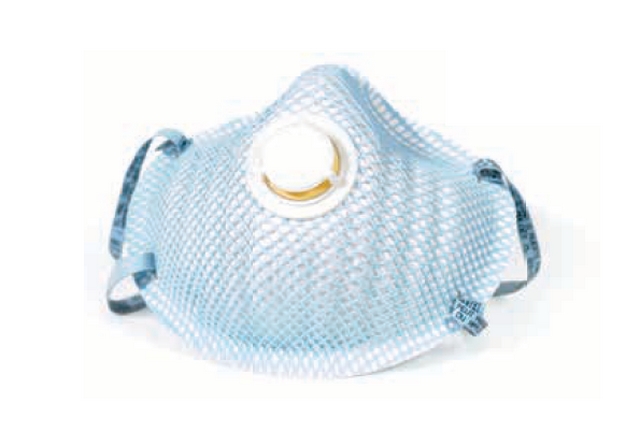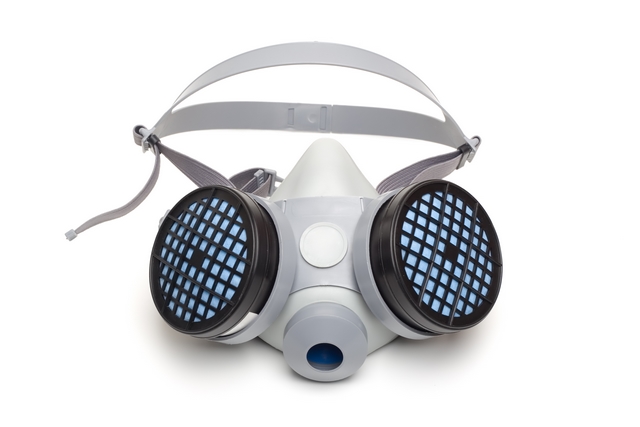
By Glenn House — Director of Product Safety and Regulatory Compliance
When our team of experts select the raw ingredients for WEST SYSTEM® Epoxy products, we strive to achieve excellent physical properties with the lowest possible risk to human and environmental health. There is a safe exposure level for most substances. The more toxic the substance, the lower that level will be. Overexposure occurs when the safe exposure level is exceeded. When this happens, the substance can impact your health.
Hazardous substances can enter the body through skin absorption, ingestion, or inhalation. The route for a particular substance depends on its physical characteristics and how it is being used. This article will focus on a less common route of overexposure, inhalation. We’ll discuss how to prevent inhaling epoxy vapors and reduce your risk of respiratory issues when working with epoxy products.
Low VOCs
Our epoxies have very low VOCs (volatile organic compounds), and any evaporation takes place quite slowly. However, if epoxies are heated or if workspace ventilation is inadequate, the risk of overexposure by inhalation increases.
Breathing highly concentrated epoxy vapor in a small, unventilated workspace such as a boat interior or small workshop, can irritate the respiratory system and cause sensitization. This is a type of allergic reaction resulting from the immune system overreacting to a substance. If you’ve already been sensitized to epoxy, exposure to low concentrations of epoxy vapors can trigger this type of reaction very easily.
Even with low VOCs, epoxy vapors can build up in confined spaces. Providing ample ventilation when working with epoxy in confined spaces is important in preventing overexposure. Effective ventilation can range from basic floor or window fans to expensive, high-tech air-filtration and exhaust systems. If you can’t adequately ventilate your workspace, be sure to wear appropriate respiratory protection. We recommend an air-purifying respirator with an organic vapor or multi-contaminate cartridge.
Pots of curing epoxy can get hot enough to ignite surrounding combustible materials and give off hazardous fumes. Because of the complex variety of fumes given off by exotherming epoxy, standard respirators are ineffective. Therefore it’s important to place pots of mixed, exotherming epoxy in a safe and ventilated area, away from people and combustible materials. Dispose of the solid mass only after it has completely cured and cooled.
Partially Cured Epoxy Dust
Sanding partially cured epoxy produces airborne dust, which increases your risk of exposure by skin contact, inhalation or ingestion. Although epoxy is often firm enough to withstand sanding within eight hours after application, depending on the ambient temperature it may not cure completely for up to two weeks. We never recommend sanding until the epoxy has at least cured overnight, and longer if the cure is taking place in a cooler environment. The dust of epoxy that hasn’t completely cured contains unreacted hazardous components. Never overlook or underestimate this hazard.
Do not breathe the sanding dust of partially cured epoxy because the chemicals in epoxy remain reactive until they have fully cured. Serious health problems can result from sanding partially cured or “green” epoxy. If inhaled, these dust particles get trapped in the mucous lining of your respiratory system where the reactive chemicals can cause severe respiratory irritation and/or respiratory allergies. To avoid this, provide good ventilation and wear a dust/mist mask or respirator when sanding any epoxy, especially partially cured epoxy.
The approved respiratory protection against epoxy dust, wood dust, and nuisance dust is a dust/mist mask or respirator with an N95 rating or better.

The Scoop on Epoxy Fillers
WEST SYSTEM fillers present few concerns in the way of acute hazards. However, as is the case with just about any nuisance or respirable dusts, long-term or repeated exposures can result in chronic respiratory problems or worsening of existing lung conditions. Smokers, and others whose lungs are under strain, are far more likely to develop serious respiratory problems if fillers are inhaled. A particulate dust mask can help prevent the inhalation of airborne fillers.
Don’t Spray Epoxy
Although it is possible to spray WEST SYSTEM Epoxy, we strongly recommend against it. Leaving aside the practical difficulties such as equipment expenses, the associated health and safety issues are enormous.
To effectively spray epoxy and obtain a desirable finish, it must be atomized. As epoxy leaves the spray gun nozzle, it is reduced to tiny droplets (spray mist). Most of the spray mist that doesn’t land on the surface remains airborne before settling to the ground. While the mist is suspended in the air there is a tremendous risk of inhalation. This can cause respiratory tract irritation, burns, sensitization, chemical pneumonia, and other serious health complications. Spray mist settling on unprotected skin or eyes can result in eye injury, skin sensitization, and allergic reactions. Spraying also increases the amount of hazardous volatile components released from the epoxy compared to other application methods.
In addition, using solvents to thin the epoxy so it can be sprayed poses dangers to health and safety. Solvent-related hazards would be similar to those of any spray painting operation and involve serious health and explosion risks.
Conclusion
Inhalation is one of the less common routes of epoxy overexposure, but should still be taken into serious consideration when setting up your work area and selecting personal protective gear. Visit the health and safety pages at westsystem.com or call our Technical Staff at 866-937-8797 for answers to any concerns you have about using epoxy safely and appropriately.





